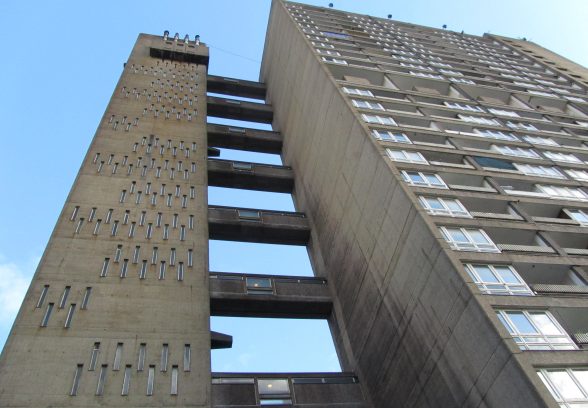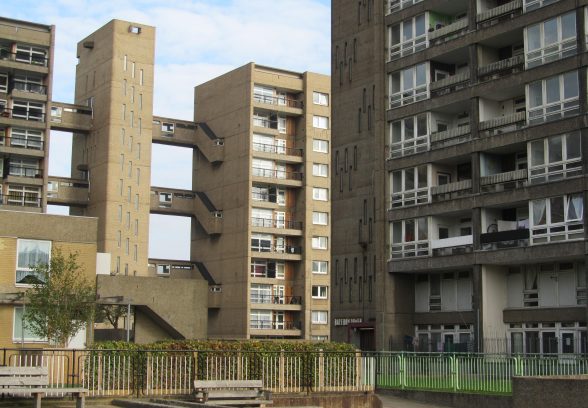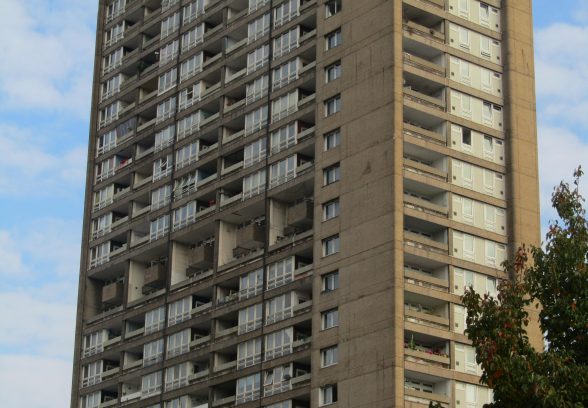This website uses cookies
This website uses cookies to enable it to function properly and to analyse how the website is used. Please click 'Close' to accept and continue using the website.





The Twentieth Century Society is delighted that Erno Goldfinger’s Balfron Tower has been upgraded to grade II* and given the very special heritage status it deserves. It joins its younger west London counterpart, the Trellick Tower, amongst the top 5 % of all listed buildings – a particularly rare accolade for a post war housing development. The upgrade comes at an important time as the building is under threat from current proposals to change its landmark appearance and strip out original features.
The listing upgrade was announced last week by Historic England after the proposed changes to Balfron Tower had already been submitted. Following the new grade II* listing status, we are calling on Tower Hamlets to re-assess the proposals in their entirety, and either refuse the current scheme or secure major modifications from the applicant.
Catherine Croft, Director of Twentieth Century Society said: “It is great to see the historic and architectural qualities of this building celebrated through its grade II* listing. It also sends a strong signal about the importance of historic fabric and architectural authenticity. We strongly urge the applicants to re-think their scheme and celebrate this building by enhancing its special qualities rather than seeking to ‘transform it’.”
“With the current resurgence of interest in post-war buildings, there has never been a better time to work with the architecture rather than against it. The current proposals require a rethink and a conservation led approach,” added Croft.
The planning application proposes a dramatic change to the appearance of the building which includes removing the original chunky white timber windows from the principal facade and replacing them with dark brown aluminium frames. Inside, original hard finishes like the quarry tiles to the access corridors would be lost, and the plan form of the building would be changed. In our view these are drastic and unjustified changes that will harm the character and appearance of the building, and the wider estate.
Balfron Tower was designed by Erno Goldfiner in 1965-7. The reasons for the upgraded Historic England listing description include: “Architectural interest: strikingly sculptural, it is the precursor and model for Goldfinger’s modernist high-rise towers, and a manifestation of the architect’s rigorous approach to design and of his socialist architectural principles”; and “Materials and construction: concrete aggregate, exceptionally fine bush-hammered concrete finishes and precise joinery, establishing a consistency in planning, palette of materials and aesthetic applied across the estate”. See the rest of the listing description here.
The tower is also of considerable historic interest as the proto-type for the Trellick Tower in west London which was built 1968-72 to similar designs. Goldfinger spent several weeks living in Balfron Tower after it opened, interviewing residents so that he could find out how it worked, and promoting the desirability of high rise living.
Balfron Tower was originally listed at grade II in 1996. We supported an application to upgrade the building to grade II* submitted to Historic England last year. The building sits next to Carradale House and Glenkerry House as part of the same estate – also designed by Goldfinger and listed at grade II.
For more information, please contact Henrietta Billings, Senior Conservation Adviser or Catherine Croft, Director: Henrietta@c20society.org.uk and 020 7250 3857.

Become a C20 member today and help save our modern design heritage.